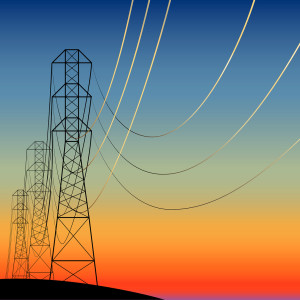Technology has evolved by leaps and bounds over the last decade. It’s hard to believe that the first iPhone was introduced just a little more than 10 years ago — a key indicator of the transition to a digital economy and way of life.
The electric power industry’s digital transformation is underway. Electric companies are investing more than $100 billion each year to build smarter energy infrastructure and transition to even cleaner generation sources.
In fact, electric companies across the country are modernizing and digitizing their energy grids to enhance reliability, resiliency and security; to integrate and manage growing numbers of renewable and distributed energy resources; and to provide customers with more options for using and managing their energy. Distributed energy resources offerings — like private and community solar, electric vehicles, energy storage, and integrated energy management technologies connected to the energy grid — represent an exciting new pathway for expanding customer choices.
The Institute for Electric Innovation released the report, “The Role of Electric Companies in Providing Distributed Energy Resources and Other Energy Services,” which presents the fundamental reasons electric companies should be able to offer energy services beyond electricity supply and energy grid services directly to customers and to participate in competitive markets for these services.
The electric power industry is well-positioned to help grow this market. Allowing companies to offer distributed energy resources to customers goes hand in hand with smart grid investments already underway and promotes competition and innovation in the market. This expands customers’ access to distributed energy resources and other energy services — providing them with more options at a lower cost.
Progress is being made: Some states have already recognized the importance of allowing electric companies to participate in the market.
For example, in 2014, the California Public Utilities Commission recognized that electric companies have a unique role to play in developing, supporting and expanding electric vehicle charging infrastructure across the state and overturned a rule that prohibited their participation in the market. As a result, California’s three investor-owned electric companies each have launched or are launching pilot programs to install a combined 12,500 charging stations at workplaces, multi-unit dwellings and public interest destinations throughout the state.
Another example of success in regard to an electric company providing distributed energy resources is private solar PV in Arizona. The Arizona Corporation Commission has approved two private residential solar pilots — Arizona Public Service’s two-stage project to offer private solar PV to residential customers, with a first stage of 8 megawatts, followed by a second stage of 2 MWs and Tucson Electric Power’s 3.5 MW Residential Solar Program, serving approximately 500 to 600 customers of all types, regardless of credit score.
The electric company-provided solar represents only a fraction of the private solar market in Arizona. The Arizona Corporation Commission’s approval of these programs indicates the vital role that electric companies can play in providing private solar to all types of customers going forward.
However, obstacles to market growth and more widespread penetration of distributed energy resources and other energy services still exist. The current regulatory paradigm is not flexible and does not reflect the rapid technological innovation occurring in the electric power industry today. Electric companies must be able to invest in technologies that will help meet customer needs and improve their energy experience. To this end, more market participants in the distributed energy resources and energy services markets drives down costs, broadens market access for customers and spurs innovation. This already has taken place in private solar and battery energy storage, where electric company participation is driving cost declines that ultimately benefits customers.
In the Institute for Electric Innovation’s view, there are three factors critical to a successful competitive market for distributed energy resources and other energy services: First, a regulatory structure that prioritizes technology innovation and customer needs is essential. This means that in order for electric companies to offer distributed energy resources and other energy services beyond electricity supply and energy grid services, the pricing of retail electricity supply and energy grid services must be cost-based and transparent.
Second, a successful distributed energy resources market requires a level playing field. Implementing rules and regulations that apply equally to electric companies and third-party providers allowing both to participate fairly in the market will benefit customers. It’s important that regulations focus on providing customers with access to services, ensuring a minimum level of performance, and establishing or reinforcing customer protections. There is no one-size-fits-all regulation — all energy services are different and need to be treated that way.
Last, competitive services should be paid for by the customers who benefit from them, and not bundled with non-competitive services. It is critical that regulations avoid creating a cost shift or subsidy from one customer to another.
With the proper rules and regulations in place to ensure a level playing field and to provide the greatest value for customers, the electric power industry has a critical role to play in shepherding and deploying the next generation of energy resources and services into the hands of all customers.

